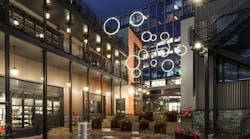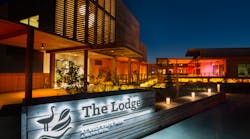Nearly all nano-phosphors and many traditional phosphors contain heavy metals that are toxic and present a hazardous waste-stream risk to manufacturers.
"Eliminating the heavy metals while keeping all colors of our nano-phosphors bright is a significant advancement in phosphor technology," said Eric Burnett, president & CEO of Applied NanoWorks. "The NYSERDA funding will help accelerate our ability to bring this material to market in commercial volumes."
Based on US Department of Energy data, says Burnett, use of white LEDs could save New York State 29% of its energy consumption, which would be the equivalent of nearly $1billion in annual energy-related savings.
White LEDs have been lagging behind other colors due to the complexity and cost of achieving reliable white light from an LED. A nano-phosphor that is bright, comes in all colors of the rainbow, lasts long and eliminates the toxic materials, such as heavy metals, is the ideal phosphor for bringing white LEDs closer to market acceptance.
"We see potential in the performance already achieved by the Applied NanoWorks non-toxic nano-phosphors and see tremendous potential for New York State from both an energy conservation perspective as well as the potential for building a new industry right here in New York," said NYSERDA president Peter Smith.
"Our funding of this innovative material will help address toxicity and performance issues that have been roadblocks to large scale adoption of white LEDs in the past and bring a promising technology closer to market."
According to Lux Research, the nano-phosphor market was $3-5M in 2004. Targeted white LED markets where better phosphors will make a significant impact are much larger -- $350M according to Strategies Unlimited. The general lighting market was a $16B market in 2002 according to the US Department of Commerce.




